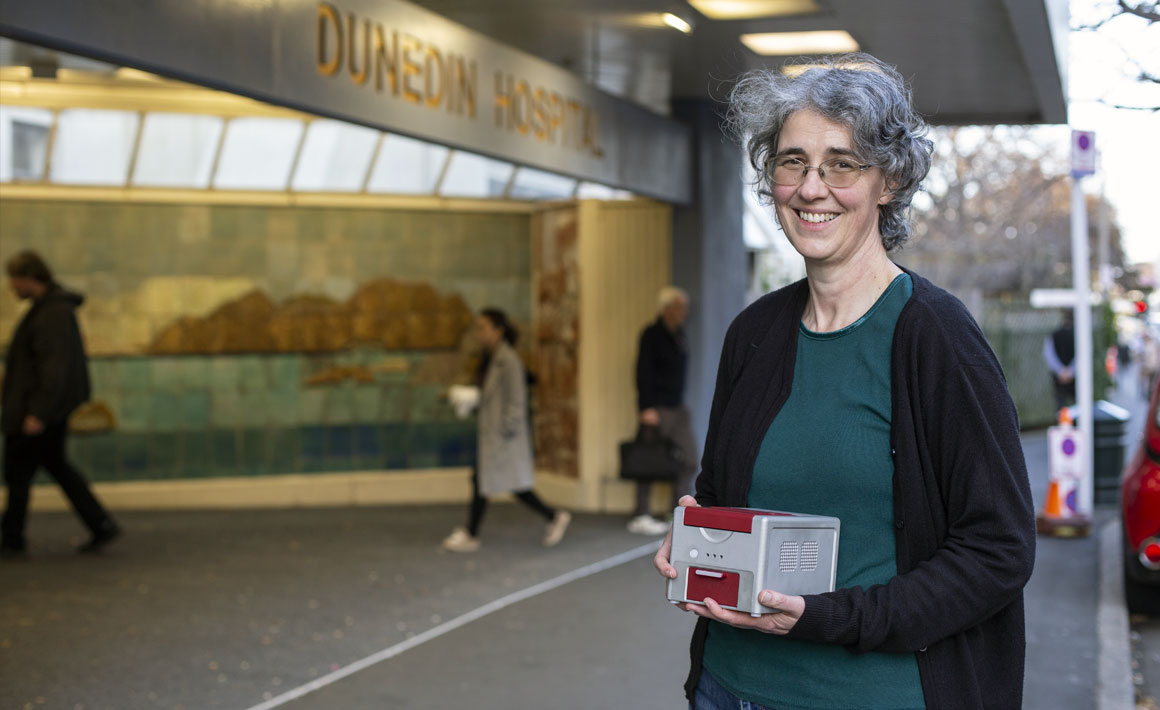 Associate Professor Jo Stanton: “COVID-19 is tricky because it is an RNA virus, but I think we're on top of that one.”
Associate Professor Jo Stanton: “COVID-19 is tricky because it is an RNA virus, but I think we're on top of that one.”Hand-held technology used to identify plant viruses in the field is informing the development of a new device to quickly detect COVID-19, delivering on-the-spot results and potentially transforming the diagnostic process.
Imagine sitting under a tree in sub-Saharan Africa detecting virus DNA using a hand-held machine that works as well as those in your laboratory.
For Associate Professor Jo Stanton (Anatomy) that requires no imagination at all, because she has already done it using a portable device she helped develop to detect a virus that was crippling cassava production and the livelihood of subsistence farmers. The challenge now is to develop that technology to detect COVID-19 in the field.
“We were able to go from selecting our plants, extracting the DNA, to sequencing, all on a farm, with no internet connection or mains power source – and we could get a diagnosis in under four hours.”
Stanton is now leading a team working on an MBIE project to develop a device where they can safely put a sample in at one end and, within a short time, get a screening diagnosis out the other without having to double-handle the sample.
“The lab's mission is to take these complex molecular tests and put them in the hands of people who are not molecular biologists, but absolutely require the answer that molecular biology can deliver.”
“Our aspiration is to do that in under 30 minutes. Even an hour would be huge achievement. The lab's mission is to take these complex molecular tests and put them in the hands of people who are not molecular biologists, but absolutely require the answer that molecular biology can deliver.”
The Health Research Council of New Zealand is also backing the project with a grant to develop a system a community health-care worker could use, then have some rural clinics troubleshoot it.
Sending samples to a central lab incurs costs and risks sample degradation, Stanton explains. In developing countries, there can be a long wait for test results in remote places, meaning people can be spreading virus in the meantime.
“If you can give someone an answer while they're sitting in front of you, basically you know that from that point whether they need to be self-quarantining or be admitted to hospital, depending on their clinical state. It completely transforms how they can handle a situation.”
In the longer term, there is also scope to use the technology for other viruses.
“We have been developing this technology using plant viruses. This is very simplistic – but a virus is a virus. One of the big differences is that some are DNA viruses and some are RNA viruses.
“COVID-19 is tricky because it is an RNA virus, but I think we're on top of that one.”
Stanton says trying to take a lab outside involves all sorts of engineering and electrical challenges, but one of the things she likes about working in this space is that she is working with so many experts in their field – from computer programmers and medical lab technicians to an optical physicist.
“We have this really varied team of people who come together with the sole focus of trying to get this technology into the hands of the people who need these answers quickly.”
Funding
Ministry of Business, Innovation and Employment
Health Research Council